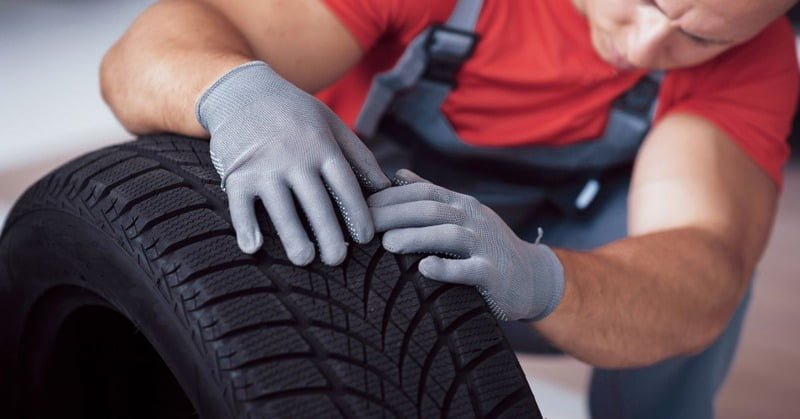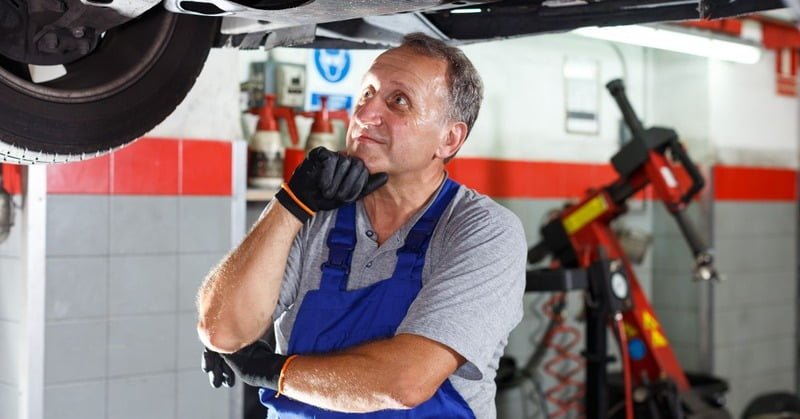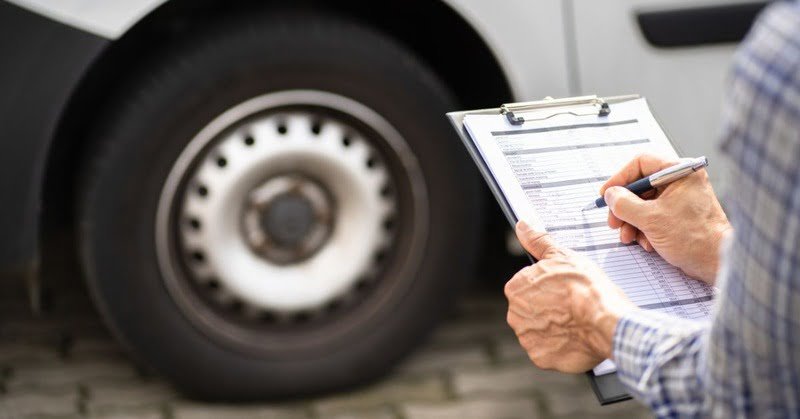Blog
How to Conduct a Tire Inspection: All You Need to Know
Have you ever felt that your car rides a bit ‘off’? Maybe it pulls to one side or the ride just isn’t as smooth as it used to be. This could be a sign that your tires aren’t in top shape.
Much like worn shoes can lead to a painful stumble, worn tires can lead to less grip on the road, affecting how your car handles and more importantly, your safety.
In this guide, we’ll help you understand how to properly inspect your tires in a clear and concise way.
Gone will be the days when you have to wonder whether or not you’re safe from your own tires.
With that said, let’s get to inspecting!
Table of Contents
How to Properly Inspect Your Tires

Inspecting your tires is an important maintenance task that helps ensure your vehicle’s safety and optimal performance.
Here’s a general guide on how to conduct said inspection:
1. Prepare for the Inspection
Have a tire pressure gauge, tread depth gauge, and a flashlight handy.
Tip
Perform the inspection in a well-lit area, preferably on a flat surface to ensure accurate tire pressure readings.
ALSO CHECK: Is It Bad to Park with a Tire Against the Curb?
2. Visual Inspection
Start by giving all the tires a general inspection, looking for any visible damage such as cuts, punctures, or objects that might be embedded in the tire.
Next, focus on the sidewalls, checking them closely for any cracks, cuts, bulges, or other irregularities that could suggest internal damage or weakness.
Finally, examine the tread of each tire, checking for uneven wear patterns, shallow treads, and any signs of foreign objects or surface damage that could affect performance.
3. Tread Depth
Check the depth of the tire tread to ensure it’s sufficient. The minimum legal tread depth is 2/32 inches, but it’s safer to replace tires when they reach 4/32 inches of remaining tread.
A simple method is the “penny test,” where you insert a penny into the tread with Lincoln’s head upside down; if you can see the top of his head, it’s time to replace the tire.
ALSO READ: How Much Tire Bead Damage is Too Much?
4. Tire Pressure
Use a tire pressure gauge to check each tire’s pressure, including the spare.
Ensure they are inflated to the pressure recommended in the vehicle’s owner’s manual or on the placard found in the driver’s door jamb.
Incorrect pressure can lead to premature wear and handling issues, so you need to adjust the air pressure if necessary, inflating or deflating to the recommended levels.
These are the general steps on how you can safely and properly check your tires. In the next section, we’ll go through the frequency of when you should check them.
RECOMMENDED: Can Hitting a Curb Cause a Flat Tire?
How Often Should You Be Inspecting Your Tires?

Here’s a general idea of when you should check your tires:
Quick Checks
It’s recommended to give your tires a quick visual check every time you use your vehicle. Look for any immediate issues like cuts, punctures, or objects embedded in the tire.
Monthly Checks
More thorough inspections, including checking tire pressure, tread depth, and overall condition, should be done at least once a month. This helps catch any issues that can lead to premature wear or safety hazards.
Seasonal Check
At the change of each season, especially from warm to cold weather, checking your tires is crucial as changes in temperature can affect tire pressure and performance.
Yearly Check
In addition to your own inspections, it is wise to have tires professionally inspected at least once a year or more often if you drive frequently or in harsh conditions. This can be done during routine vehicle maintenance such as oil changes or tire rotations.
Conclusion
By conducting regular inspections, you not only extend the life of your tires but also enhance your driving experience. It’s comforting to know that the days of uncertainty about your tires’ condition are behind you.
Curbs are one of the main causes of damage to your tires. Aligning this with our topic, we make sure that our customers are well-equipped to inspect and identify any issues.
If you’re interested in reading more on similar topics, don’t hesitate to visit our blog where we discuss various curb and tire-related issues.
Topics such as ‘how to change a tire without a jack‘ and ‘driveway curb too high‘ are quite common here at Smooth Curb.
Contact us if you have any questions, and consider checking out our best-selling product, The Smooth Curb Driveway Curb Ramp, to ensure that your driveway’s curb is well managed.
So, to conclude, with the skills you’ve learned here, you can drive with confidence, knowing that you have taken proactive steps to protect yourself and your passengers.
We hope you’ve learned something new today, and we look forward to seeing you in our next article.
Take care!
FAQs
How do tire inspections differ for various types of vehicles like motorcycles, trucks, and cars?
Tire inspection principles are generally similar across vehicle types, focusing on tread depth, tire pressure, and visual condition.
However, the specific standards and practices can vary. For instance, motorcycles might require more frequent checks due to their high susceptibility to road hazards, whereas trucks might emphasize checking for uneven wear due to heavier loads.
What is the impact of driving habits on tire wear and how should inspections address this?
Driving habits such as aggressive acceleration, braking, and high-speed driving can accelerate tire wear.
Inspections should therefore include checks for uneven wear patterns, which might indicate aggressive driving behaviors. Adjusting driving habits can prolong tire life and reduce the frequency of tire replacements.
Can weather and climate affect tire condition, and how should inspections adapt to different climates?
Yes, extreme temperatures, whether hot or cold, can significantly affect tire pressure and rubber condition. In colder climates, tires should be checked more frequently for loss of pressure and hardening rubber, which can reduce traction.
Conversely, in hot climates, overinflation and increased wear from softening rubber are common concerns.
What are the risks of driving on under-inflated or over-inflated tires, and how does proper inflation align with safety and efficiency?
Driving on under-inflated tires increases the risk of tire failure and uneven wear, whereas over-inflated tires can lead to decreased traction and increased wear on the center tread.
Proper inflation ensures optimal contact with the road, improving safety and fuel efficiency. Regular pressure checks are essential for maintaining the correct inflation level.
What are the best practices for DIY tire repair, and when should a professional be consulted?
Minor punctures in the tread area can sometimes be repaired with DIY kits if they are small and the tire is otherwise in good condition.
However, sidewall damage, larger punctures, or any signs of internal damage require professional assessment and repair to ensure the tire remains safe for use.


